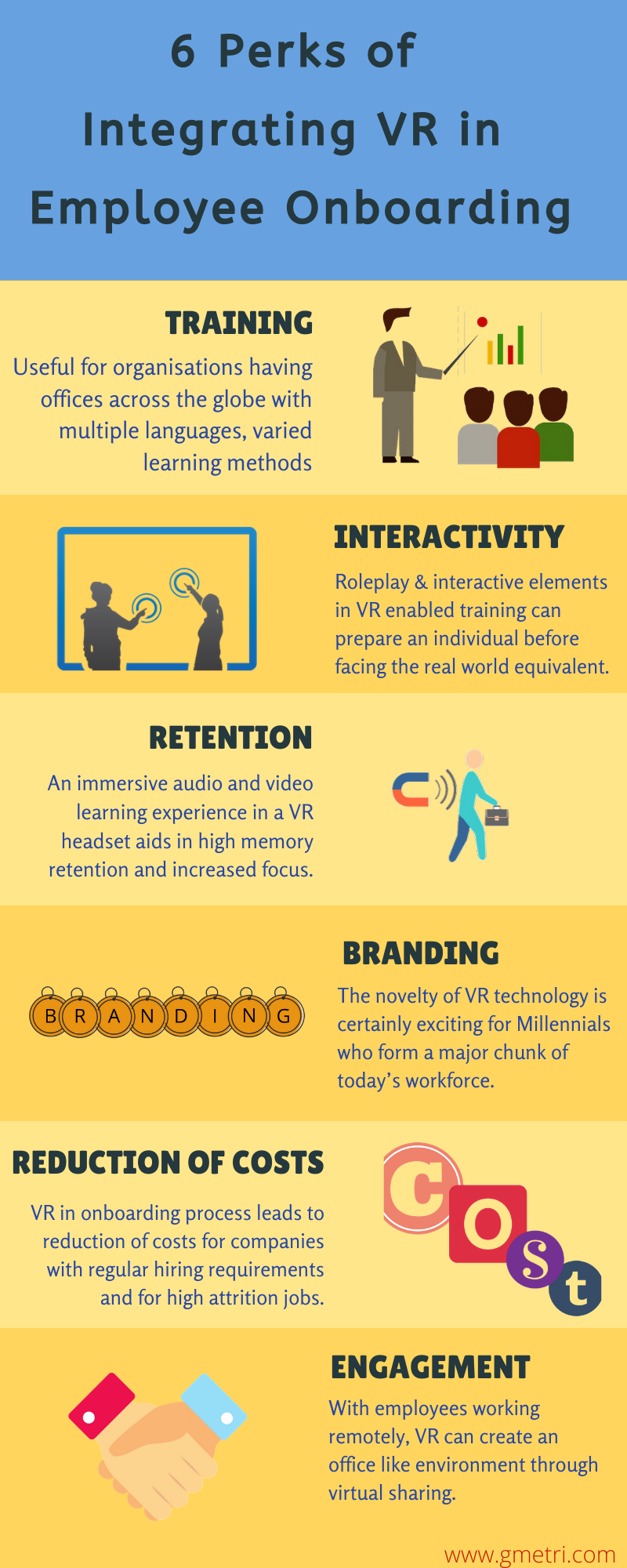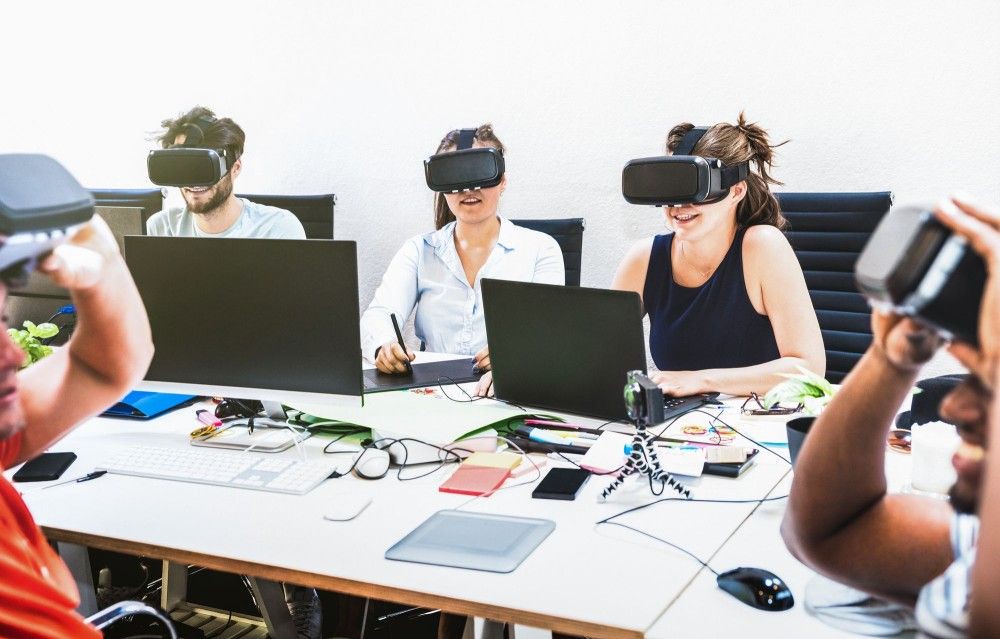Virtual Reality or VR technology has been in existence for decades across domains. It’s the technology that makes us go WOW in movies, video games, and via interactive marketing. Historically, it has also been used by the military and by the medical fraternity. In more recent years, this piece of VR technology has been making waves in the education, human resources and corporate training industries. One such focus area for virtual reality in workplaces is employee onboarding.
How impactful is Virtual Reality in this domain?
First, let us understand what employee onboarding is.
To explain in simpler terms, the various processes that are involved in getting a new employee onboard is referred to as employee onboarding. Hiring, orientation, and virtual reality employee training are usually the different steps involved in the employee onboarding process.
Why is employee onboarding important?
On an average, the cost to replace an employee can fall anywhere between 25-50% of their annual salary. Through a well-structured onboarding program, new hires are 69% more likely to stay in the organisation. When done right, new employee onboarding is a key step in creating loyal employees.
However, the current practices in most workplaces involve a considerable amount of time, money, and resources.
Role of VR in employee onboarding
Hiring new employees can be a tedious and time-consuming task for organisations, especially those that hire often, have a high attrition rate, source from different parts of the world, and hire in bulk. So how can VR change this? In more ways than one, without actually needing to be physically present, virtual reality in workplaces gives new hires a close approximation to their new workplace.

Focus areas of Virtual Reality in Onboarding
Training
The existing orientation and training processes in organisations usually mean new employees visiting the organisation’s premises for one or more days. This can take up a dedicated resource and lots of time, that could have otherwise been used for some other important task. Through virtual reality in workplaces, employees can become familiar with the work environment, no matter where they are.
A VR onboarding software can be especially useful for organisations having offices across the globe. By featuring multiple languages, the software can help overcome cultural differences and varied learning methods and make the VR employee training process a smooth one. With flexible timelines, an employee can ease into the settling in period and acclimatize seamlessly.
Interactivity
Virtual Reality for training in high-risk jobs can emulate a realistic and life-like environment that would otherwise be potentially dangerous and life-threatening. Roleplay and interactive elements in VR enabled training can prepare an individual of what’s in store before facing the real world equivalent. A good example is having 360 degree training in a VR simulated environment for firefighters and the police. In the ITES domain, call centre employees can be trained in conflict resolution or how to handle irate customers through a VR simulation before actually taking live calls.
Retention
A gamified training and interactive learning environment can boost retention through improved focus. An immersive audio and video learning experience in a VR headset aids in high memory retention and increased focus because of multi-sensory input. It also brings in the promise of increased productivity.
Branding
The novelty of VR technology is certainly exciting for Millennials who form a major chunk of today’s workforce. As per a 2016 study by Penn Schoen Berland, about 82% millennials have stated that high tech offices influence their decision about taking a new job.
Reduction of costs
The VR onboarding process can also result in the reduction of costs in the long run. This can hold true for organisations with regular hiring requirements and for high attrition jobs.
Enhanced level of engagement
Virtual Reality also brings in the promise of seamless collaboration through teams. With employees working remotely across the globe, VR can create an office like environment through virtual sharing, taking engagement to the next level.
Before getting on boarded with VR
Evaluate the current process
Before getting VR for onboarding and training processes, evaluate your organisation’s existing process. Check for shortcomings and strengths and see how VR can minimize the shortcomings.
Identify your audience
Do identify your audience before using any software. VR technology may be unfamiliar with the older generation and may warrant a different learning curve.
Identify the purpose
Make sure to identify the chief purpose of getting VR on board. Is it mainly for simulation to recreate a learning environment or for interviewing overseas candidates?
Virtual Reality Onboarding Tips
- To let your employees acclimatize with the whole new world of VR, first start with short videos that can recreate an environment.
- Gradually, add layers of interactivity and layers to enhance engagement.
- Gather feedback from users to measure effectiveness of the technology. With the help of a VR heatmap, you can generate a pattern on the areas that users tend to focus on.
Read further about How to structure an Employee Onboarding Program. You can read more about VR on the Virtual Reality Blog. GMetri XR Platform has helped multiple leading companies transform their employee onboarding process to the next level.









